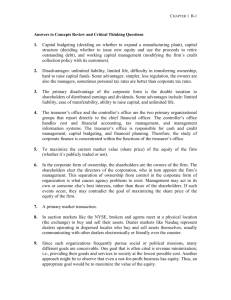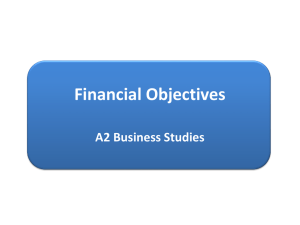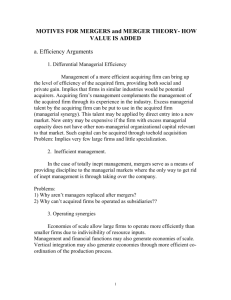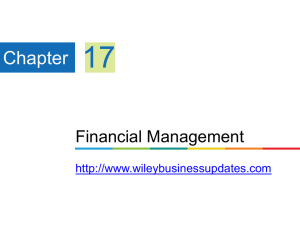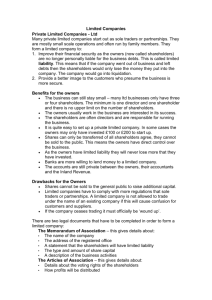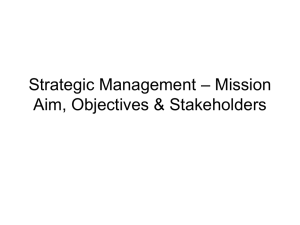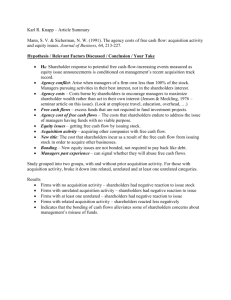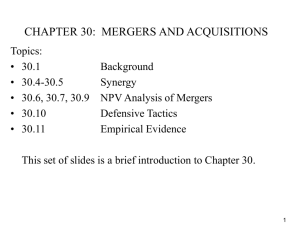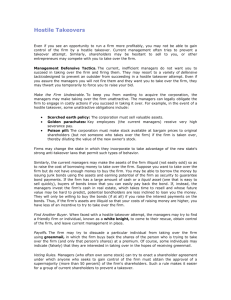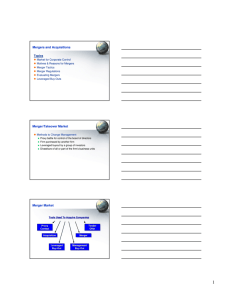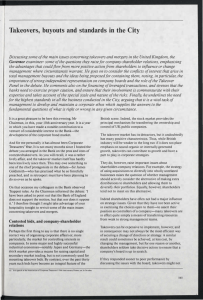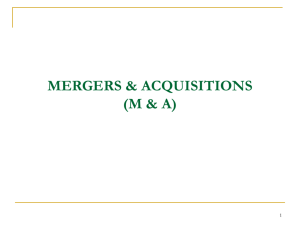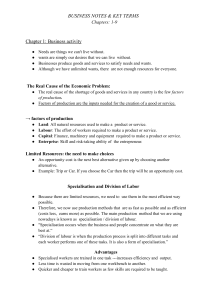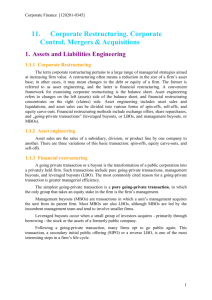Stakeholders Conflicts
advertisement
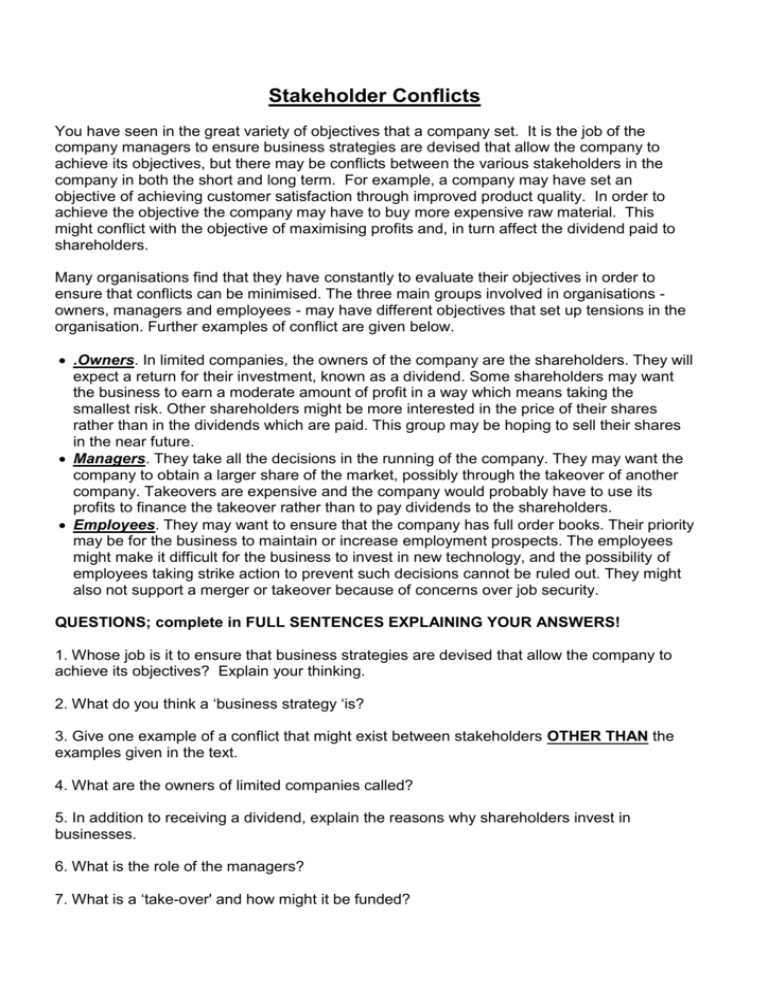
Stakeholder Conflicts You have seen in the great variety of objectives that a company set. It is the job of the company managers to ensure business strategies are devised that allow the company to achieve its objectives, but there may be conflicts between the various stakeholders in the company in both the short and long term. For example, a company may have set an objective of achieving customer satisfaction through improved product quality. In order to achieve the objective the company may have to buy more expensive raw material. This might conflict with the objective of maximising profits and, in turn affect the dividend paid to shareholders. Many organisations find that they have constantly to evaluate their objectives in order to ensure that conflicts can be minimised. The three main groups involved in organisations owners, managers and employees - may have different objectives that set up tensions in the organisation. Further examples of conflict are given below. .Owners. In limited companies, the owners of the company are the shareholders. They will expect a return for their investment, known as a dividend. Some shareholders may want the business to earn a moderate amount of profit in a way which means taking the smallest risk. Other shareholders might be more interested in the price of their shares rather than in the dividends which are paid. This group may be hoping to sell their shares in the near future. Managers. They take all the decisions in the running of the company. They may want the company to obtain a larger share of the market, possibly through the takeover of another company. Takeovers are expensive and the company would probably have to use its profits to finance the takeover rather than to pay dividends to the shareholders. Employees. They may want to ensure that the company has full order books. Their priority may be for the business to maintain or increase employment prospects. The employees might make it difficult for the business to invest in new technology, and the possibility of employees taking strike action to prevent such decisions cannot be ruled out. They might also not support a merger or takeover because of concerns over job security. QUESTIONS; complete in FULL SENTENCES EXPLAINING YOUR ANSWERS! 1. Whose job is it to ensure that business strategies are devised that allow the company to achieve its objectives? Explain your thinking. 2. What do you think a ‘business strategy ‘is? 3. Give one example of a conflict that might exist between stakeholders OTHER THAN the examples given in the text. 4. What are the owners of limited companies called? 5. In addition to receiving a dividend, explain the reasons why shareholders invest in businesses. 6. What is the role of the managers? 7. What is a ‘take-over' and how might it be funded? 8. What do employees want from the business and why? 9. What might they do if they are not happy with decisions that are being made in the business? 10. Why might they not support a merger or a take-over? 11. What is a merger? 12. What is 'job security'? EXTENSION WORK: One possible conflict that arises in an organisation is between those who wish to introduce new technology and those who see their jobs being threatened by it. 1. Give at least four examples of how IT is now used to carry out jobs that used to be carried out manually. 2. Outline at least three issues that this might give rise to in a business situation. 3. Outline how you would go about solving the problems that arise. ANSWERS: 1. Whose job is it to ensure that business strategies are devised that allow the company to achieve its objectives? Explain your thinking. MANAGERS. They have delegated authority from senior managers 2. What do you think a ‘business strategy ‘is? A plan to achieve specific objectives or a set of objectives 3. Give one example of a conflict that might exist between stakeholders OTHER THAN the examples given in the text. Shareholders want profit Workers want good pay and conditions which in turn puts up costs and profit might reduce. 4. What are the owners of limited companies called? Shareholders 5. In addition to receiving a dividend, explain the reasons why shareholders invest in businesses. Capital growth in share price Control or interest in supporting the business 6. What is the role of the managers? To take decisions in the running of the business 7. What is a ‘take-over' and how might it be funded? It can be funded through profits, increasing share capital, a loan…. 8. What do employees want from the business and why? Good pay and conditions and job security; they would like the organisation to have full order books. 9. What might they do if they are not happy with decisions that are being made in the business? Strike, go-slow 10. Why might they not support a merger or a take-over? Their jobs might be at risk 11. What is a merger? Where 2 businesses merge to make one 12. What is 'job security'? Knowing that your job is going to continue into the future EXTENSION WORK: One possible conflict that arises in an organisation is between those who wish to introduce new technology and those who see their jobs being threatened by it. 1. Give at least four examples of how IT is now used to carry out jobs that used to be carried out manually. Robots on production lines Administrative task (letter typing, accounts) On line banking On line ordering (books, electricals….) Call answering systems / call centres 2. Outline at least three issues that this might give rise to in a business situation. Demotivation of staff Loss of job Outsourcing of services 3. Outline how you would go about solving the problems that arise.




